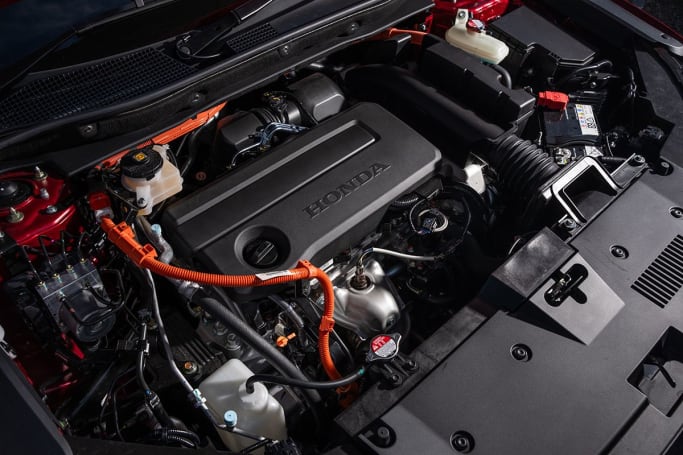There are seven grades in the new CR-V line-up and all but one of them are powered by Honda’s 1.5-litre turbocharged petrol engine.
The VTi-X opens the range at $44,500, which, like all Hondas these days, since the brand shifted to an agency dealer model, is drive-away.
Of the petrol grades, there are two five-seat, front-wheel drive grades (VTi X, VTi L), two seven-seat front-wheel drive variants (VTi X7, VTi L7), and two five-seat all-wheel drive models (VTi L AWD, VTi LX AWD). The latter costs $57,000 drive-away.

Topping the range is a new hybrid variant, awkwardly named the e:HEV RS. It is two-wheel drive and five-seat only, and costs $59,900 drive-away.
The addition of this new grade means all Honda models from HR-V to CR-V have at least one hybrid grade available.
The price of entry to a CR-V has technically gone up by about $9000, but that former Vi base model and its underpowered 2.0-litre engine are gone in the new generation.

Also, it’s an all-new model that’s much bigger and has loads more features. And given Honda has crept a little upmarket lately, I think this pricing is very competitive.
Nissan’s X-Trail range runs from $37,250 to $57,690 but that’s before on-road costs. Similarly, the RAV4 ranges from $39,760 to $58,360, before on-roads.
It is a shame the hybrid is only available in the top-spec CR-V grade, while its rivals have multiple hybrid variants at different price points. But watch this space because Honda execs hinted to me that more hybrids are likely to roll out across the Honda model range.

In terms of specification in the base grade you get 17-inch alloy wheels, leather-appointed seats, power-adjustable driver's seat, drive-mode selector, 7.0-inch driver display, wireless smartphone charger, a hands-free power tailgate with a walkaway close function, and an eight-way power adjustable driver’s seat.
There’s a 9.0-inch touchscreen system, wireless Apple CarPlay and wired Android Auto, while some grades score satellite navigation and a premium Bose sound system.
It also comes with a five-year subscription to the Honda Connect app that has features like remote lock, climate control and lights on/off, as well as car status, an emergency call function, visual dashboard and more.

Higher grades have black leather appointed upholstery (the hybrid gains red stitching), keyless entry and start, 'Active Noise Control', and front ambient lighting, while the VTi LX AWD and e:HEV RS have 19-inch alloys.
As per Honda’s new sales strategy there are no options. The listed spec is what you get for each respective variant. And Honda does not charge extra for a different colour choice.



























